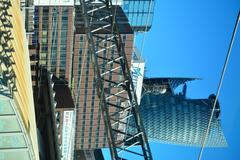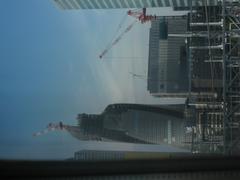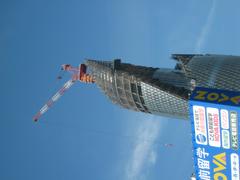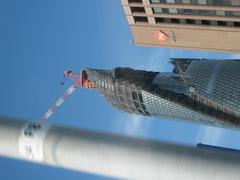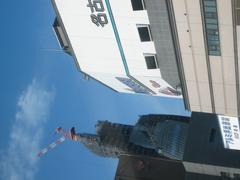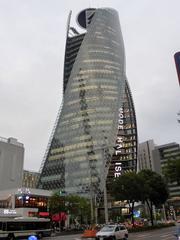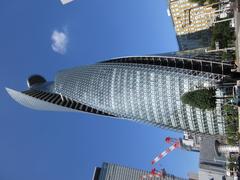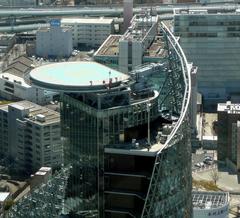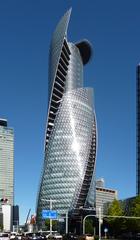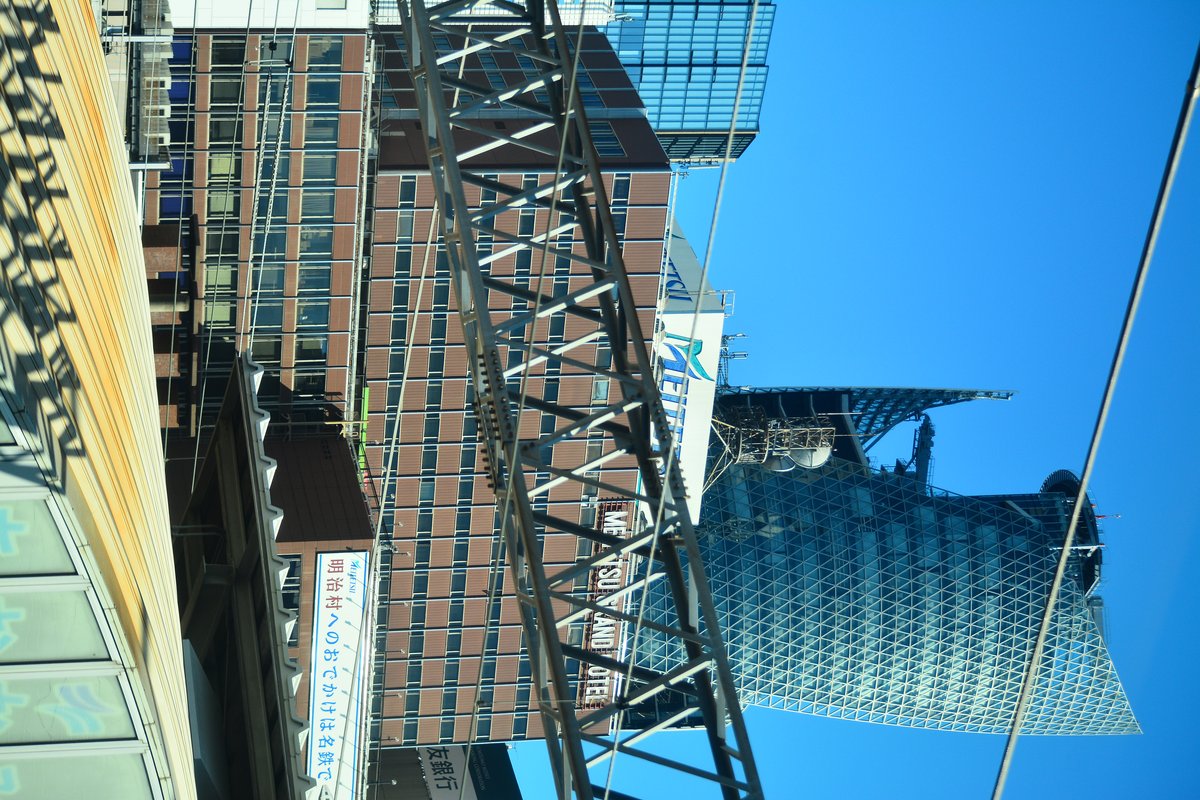
Mode Gakuen Spiral Towers Visiting Hours, Tickets, and Visitor Guide: Exploring Nagoya’s Architectural Landmark
Introduction
Rising above Nagoya’s bustling Meieki district, the Mode Gakuen Spiral Towers is a striking example of Japan’s fusion of architectural innovation and educational ambition. Completed in 2008, this 170-meter-tall skyscraper by Nikken Sekkei is both an icon of the city’s skyline and the home to three specialized vocational schools—Nagoya Mode Gakuen (fashion), HAL Nagoya (IT and digital content), and Nagoya Isen (medical support and welfare). Its dynamic, twisting silhouette symbolizes creativity, interdisciplinary collaboration, and the city’s future-forward ethos (muza-chan.net; ArchDaily; Skyscraper Center).
Strategically located adjacent to Nagoya Station—Japan’s largest rail hub—the Spiral Towers is highly accessible and anchors Meieki as a vibrant urban core. While primarily serving educational functions, its public spaces, plazas, and gardens welcome visitors to admire its architecture and enjoy the lively district.
This comprehensive guide covers everything you need to know: visiting hours, ticketing, accessibility, architectural features, nearby attractions, photography tips, and links to official resources.
Origins, Purpose, and Design
The Mode Gakuen Spiral Towers was commissioned by Mode Gakuen to create a cutting-edge educational environment and a symbol of the institution’s forward-thinking philosophy. Its construction was part of a broader urban revitalization in early 21st-century Nagoya, aiming to create a landmark that would inspire students and energize the city (muza-chan.net).
Architectural Vision: Designed by Nikken Sekkei, the building’s three interwoven wings spiral upward around a central core, each representing one of the three schools. This spiral design maximizes natural light, provides panoramic city views, and metaphorically embodies growth and interdisciplinary synergy (ArchDaily; muza-chan.net).
Construction: Work began in 2005 and was completed in 2008, marking a new era in Nagoya’s skyline and setting a benchmark for educational architecture (Emporis).
Visitor Information: Hours, Tickets, and Accessibility
Visiting Hours
- Public Spaces (Plaza & Sunken Garden): Open 24 hours, 7 days a week. No ticket required to access exterior areas.
- Building Interior: Generally restricted to students, staff, and authorized visitors due to the building’s primary educational use. No public observation deck is available.
Special Events and Guided Tours
-
Open Campus or Exhibitions: Occasional events or open campus days may allow limited interior access. Check the official school websites for event details:
-
Local Guided Tours: Some city tours include the towers as a highlight, offering architectural and cultural context.
Ticket Information
- Exterior and Public Spaces: No tickets required.
- Special Events/Exhibitions: Some may require advance booking or tickets via the schools’ official websites (Mode Gakuen Official).
Accessibility
- Wheelchair Accessibility: The plaza, sunken garden, and surrounding sidewalks are equipped with ramps and elevators.
- Public Transport: Directly adjacent to Nagoya Station (JR, subway, Shinkansen, Meitetsu, and Kintetsu lines), ensuring excellent access.
Architectural Features and Urban Impact
Structural Highlights
- Height & Structure: 170 meters, 39 floors (36 above ground, 3 basement), three spiraling wings anchored to a robust central core.
- Seismic Engineering: Advanced vibration damping systems, mass dampers, and reinforced truss tubes ensure earthquake resilience (Skyscraper Center).
- Sustainability: Double-glazed airflow windows, natural ventilation, district heating/cooling, and rainwater tanks contribute to eco-efficiency (My Modern Met; Kurby Blog).
Symbolism and Cultural Presence
The towers’ intertwining form visually communicates the fusion of diverse disciplines and the upward drive of innovation. Its shifting silhouette, especially when illuminated at night, makes it a favorite subject for photographers and a symbol of Nagoya’s cultural identity (muza-chan.net).
Urban Context
- Location: 4-27-1 Meieki, Nakamura-ku, Nagoya, Aichi 450-0002, Japan
- Role: Anchors Meieki’s transformation from a transit zone into a vibrant commercial, educational, and entertainment district (Japan Experience).
Making the Most of Your Visit
Best Viewing Spots & Photography Tips
- Ground Level: The plaza and sunken garden offer dramatic ground-up perspectives, especially during sunrise or sunset when the façade glows.
- From Above: For panoramic views of the towers in context, visit the observation deck at Midland Square nearby.
- Photography Tip: Stand on the east side of Nagoya Station for the most iconic full-height photos.
Nearby Attractions
- Nagoya Castle: A short subway ride away; historic Edo-period architecture.
- Atsuta Shrine: One of Japan’s most revered Shinto shrines.
- Midland Square: Offers a Sky Promenade observation deck.
- Osu Shopping District: Lively area for food and souvenirs.
Dining and Shopping
- Inside the Tower: Retail and café spaces on the ground floor, open daily from 10:00 AM to 8:00 PM.
- Around Nagoya Station: Extensive options for dining and shopping, including the Meitetsu and JR Central Towers malls.
Events and Seasonal Highlights
While the towers themselves do not host regular public events, the surrounding Meieki area is lively with festivals, especially in October. The towers serve as a dramatic backdrop to city celebrations.
Frequently Asked Questions (FAQs)
Q: Can tourists enter the Mode Gakuen Spiral Towers?
A: Interior access is typically restricted, except during special open campus events or exhibitions. Exterior and plaza areas are open to all.
Q: Are tickets needed?
A: No tickets are needed for exterior spaces. Check official school websites for event-specific entry requirements.
Q: What are the visiting hours?
A: The plaza and gardens are open around the clock.
Q: Is there a public observation deck?
A: No, but Midland Square nearby offers excellent skyline views.
Q: Is the area accessible?
A: Yes, all public spaces and the nearby station are wheelchair-friendly.
Q: What else can I see nearby?
A: Nagoya Castle, Atsuta Shrine, Osu Shopping District, Sky Promenade, and more.
Visuals and Virtual Tours

- [Virtual tour and high-resolution images may be available on official school or architecture sites.]
References and Official Resources
- muza-chan.net
- ArchDaily
- Skyscraper Center
- Mode Gakuen Official
- HAL Nagoya Official
- Nagoya ISEN Official
- My Modern Met
- Nikken Sekkei
- Japan Experience
- Kurby Blog
- Emporis
- Official Nagoya Tourism
Conclusion
The Mode Gakuen Spiral Towers is far more than a piece of striking architecture; it is a symbol of Nagoya’s innovative spirit and educational excellence. Its iconic spiral form, advanced engineering, and eco-friendly features have earned it international acclaim and fostered a vibrant educational community. While general interior access is limited, the building’s dramatic presence and accessible public spaces make it a rewarding stop for any visitor to Nagoya.
For event updates and insider tips, check the official school and tourism websites, and consider using the Audiala app for curated travel guidance. Whether you’re an architecture lover, culture seeker, or casual traveler, the Spiral Towers promises a memorable Nagoya experience.
